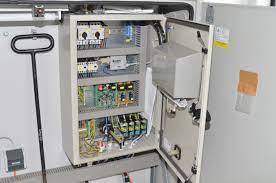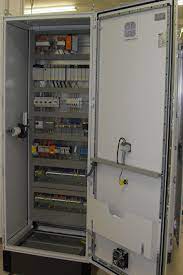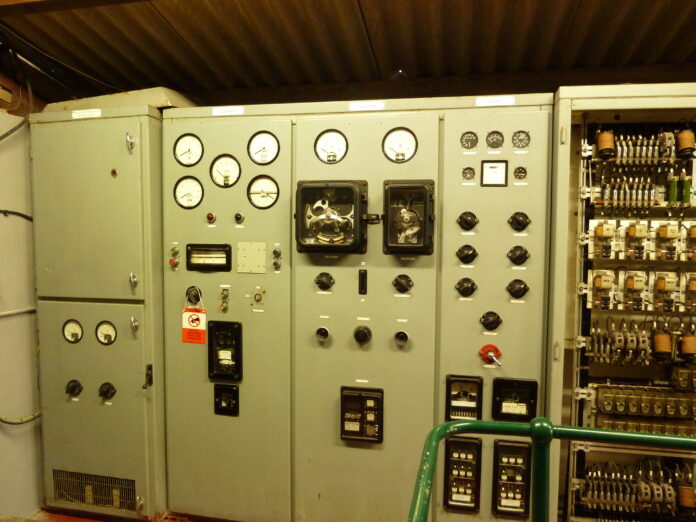What is an Electricity Control Panel?
So what is an electricity control panel? An electricity control panel is an enclosure that contains a mixture of electrical devices and gadgets which use electrical energy to control and manipulate different mechanical functions of commercial equipment and machinery? They are operated and accessed by electrical personnel who can do fault-finding, component adjustments, and electrical safety testing within the control panel. Typically, an electricity control panel has two main categories; panel structure and electrical components.
So, in this article, all necessary information about electricity control panels will be elaborated on in detail.
Structure of Electricity Control Panel:
The structure of an electricity control panel is a combination of an enclosure and a back panel having DIN rails and wiring ducts. This structure is much resembling the breaker box located in offices or homes.
Enclosures:
The enclosure is a metal control box that varies in length and contains all the electrical devices of the control panel. They are manufactured from aluminium or stainless steel. The variety of doors (typically one or two) on the enclosure determines its dimensions and size in most industrial applications. It contains multiple sections. The enclosure has to be sufficient to provide safety in its installed surroundings and generally requires resistance against any impact, vibration, heat, dust, drinks, and corrosive chemicals.
The enclosure includes a UL protection rating (508A is typical), an IP rating, and/or a NEMA classification. These listings help determine the factors such as:
- Indoor/outdoor usage
- Waterproof/water resistance
- Dust/solid contaminants proofing
- Hazardous situations rating
- Explosion-proof rating
Back panels:
A back panel is typically a metal sheet that is mounted inside the enclosure that provides structural support for DIN rails by mounting holes into it and also for wiring ducts. So, back panels are designed to provide overall support to the enclosure and the electrical components in it. The components attached to the back panel are DIN metal rails and wiring ducts.
DIN stands for Deutsche Institute fur Normung. DIN metal rails are standardized dimensions metal rails that provide the mounting structure for electrical devices and industrial control equipment. It is used for mounting electrical devices inside an enclosure. These rails are typically made from cold rolls of Carbon steel and Zinc plated or chromated bright surface material. Due to their metallic nature, they can’t conduct electric current.


Electricity Control Panel Components:
Several types of components exist in the electricity control panel enclosure which defines the different functions carried out by the panel. The following are the main electrical components of the control panel.
Main circuit breaker:
The main circuit breaker is the point where the electrical power comes into the panel to switch on all the devices inside it. Those breakers have a disconnect switch on the outside of the panel that allows it to shut off the power. The main circuit breaker handles voltage between 120V – and 480V in most industrial applications.
Surge Arresters:
A surge arrester is a protective device that protects all the electrical equipment inside the control panel from electrical surges or over-voltage. It limits voltage by discharging or bypassing the surge current. It also prevents the other components from being damaged by a lightning strike or a utility power surge.
Transformer & 24-V Power Supply:
A transformer is a voltage step-down electrical component that provides power to the smaller electrical devices inside the control panel. It has two electrically isolated coils, one is called a primary coil while the other is a secondary coil. Depending upon the incoming voltage, it can reduce the main voltage to 120V for some electrical components, or even up to 24-V to run power suppliers inside the panel.
A 24-V power supply is additionally used to give power to smaller electrical components. If the voltage coming from the transformer is 120V, the power that fits inside the panel.
Terminal blocks:
A Terminal block consists of block-shaped terminals that can be used to join two or more wires. In control panel systems, these blocks are used to connect panel-mounted electrical equipment to power and field wiring. Terminal blocks can connect one or more DIN metal rails together inside the control panel enclosure.
Programmable Logic Control (PLC):
The PLC is like the brain of the control system. It has a CPU in which the logical application is stored. it will have associated inputs and outputs which will assist, manage and display the assembly line.
This is largely a CPU contained within the managed panel. This unit is the brains of the manage panel, presenting monitoring and manage of the numerous mechanical methods. it will consist of numerous inputs and outputs to and from mechanized features of the manufacturing tool.
Relays And Contactors:
Relays are on/off switches that control mechanised functions of electrical components based on the commands from the PLC. They are also mounted on the DIN metal rails inside the panel enclosure. Relays can be categorized into smaller and larger relays. Smaller relays are used to control functions like turning on/off lights and fans, whereas the larger relays, also called contactors, are used to control more advanced functions like motors and sensors.
Network Switches:
A network switch is a communication hub of the control panel. Network switches facilitate communication. Relays are on/off switches that control mechanized functions of electrical components based on commands from the PLC. They are also mounted on the DIN metal rails inside the panel enclosure. Relays can be categorized into smaller and larger relays. Smaller relays are used to control functions like turning on/off lights and fans, whereas the larger relays, also called contactors, are used to control more advanced functions like motors and sensors.
Human Machine Interface (HMI):
Human Machine Interference or HMI, is the important component in the control panel that connects technical personnel to the machine or system of the control panel. It is mounted locally on a panel door or at a remote location. This component is a versatile component that allows an operator to monitor or control different functions of the control panel machinery. Different HMI types include video monitors, joysticks, buttons, switches, and keyboard.
Read More: Tankless Water Heater: An Ultimate Guide About Benefits Of Tankless Water Heater
Types of Electricity Control Panel:
There are three different types of electricity control panels depending upon the structure used by the control panel in industrial applications.
Power control centre (PCC Panel):
PCC (Power Control Centre) Panels are used to monitor and control the voltage and power of the power system. They also supervise the reactive power of the power system as well.
These panels are made of high-quality raw material and are extremely bulky in fabrication. The main power instrument panel consists of feeder breakers and provides breakers, monitoring devices, and control devices. A reputed PCC panel manufacturer reads all field data received for electrical power panels.
Motor Control centre (MCC Panel):
The apparatus used to design multiple electric motors in industrial systems is the motor control center panel (MCC Panel). MCC Panel (motor control center) is used for motor control of various electrical power Industries. Therefore, it is the most important electricity
MCC panel is an electrical control panel in LT panels. In other words, it can control the motor from generation to production.
Automation Panel (SCADA PLC Panel):
The automation panel (SCADA percent panel) is a programmable digital computer also known as a PLC panel. The automation panel is one of the most crucial and green varieties of control panels, which can be generally used in a selection of electronic and electric circuit fittings. Integrated with stable PLC logic and perfect PLC hardware programming.
Application of Electricity Control Panels:
Electric control panels are essentially used in industrial automation. They offer better-level monitoring and calculate many features of production machinery, permitting manufacturers to define, arrange, and meet manufacturing goals.
Electricity control panels are currently being used in the following industries such as:
- Food & beverage
- Oil & gas
- Pharmaceutical
- Power generation & power circuit
- Manufacturing
- Fluid handling
- Material handling
Conclusion:
So, Electricity control panels are essential for industrial automation. They are the best product to control mechanical equipment. Available in three main structure types; they can be utilised in the home as well as offices and industrial systems.










